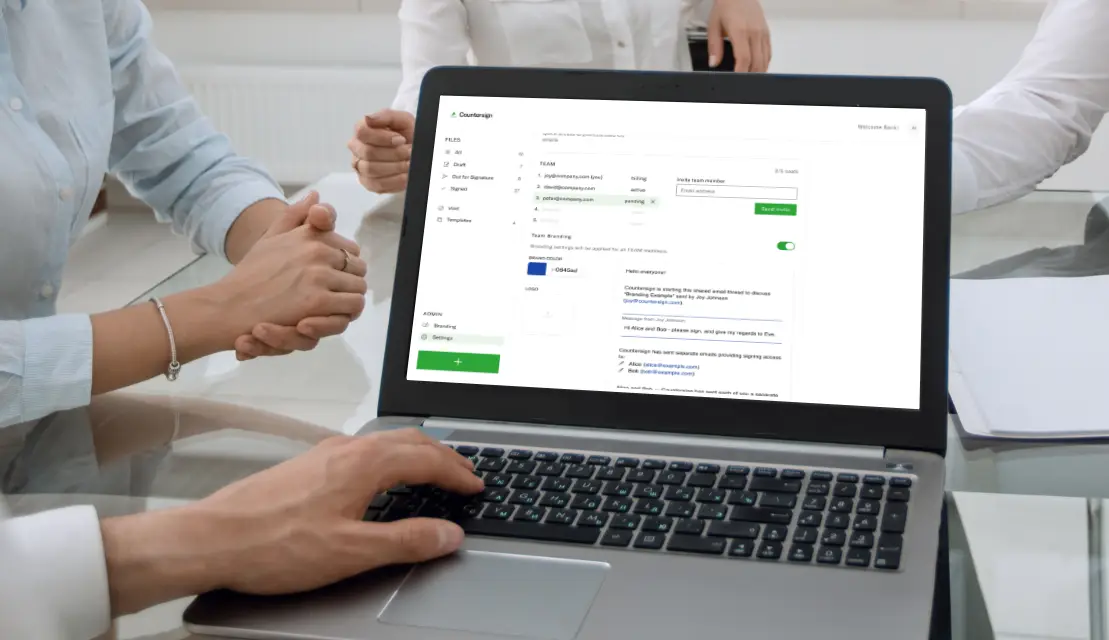Across industries, e-signatures are becoming the new standard. They’re faster and easier to use, reduce paperwork, and help companies stay organized. But how secure is e-signatures technology really? The short answer is e-signature technology is highly secure—even more so than paper signatures. Security measures used for e-signed documents include:
- Reduced chances for human error or forgeries
- Extremely secure physical servers supplemented by Cloud backup
- End-to-end digital encryption
- Secure audit trails to show who accessed a document and when
1. Fewer errors and no forgeries
E-signatures are more secure because they reduce human error. In fact, according to research by MSB, companies that switch to paperless signature systems reduce 90% of their processing errors, on average.
Fewer errors mean that documents are sent back and forth fewer times. This reduces the chance for documents to be lost, stolen, and misplaced, and it reduces the number of documents and the amount of sensitive information that needs to be managed, stored, and organized.
E-signatures are also virtually impossible to forge. That’s because they use a third-party platform to ensure that only authorized persons can access a document.
Secure e-signature services like Countersign create an audit trail for each document, so that the identity of every person who accessed it, the times they did, and the changes they made are all stored digitally. This record cannot be tampered with and provides a safe, secure record of all changes that can be monitored for suspicious activity and even presented in a court of law as legal evidence.
An additional part of the audit trail is PDFs generated in Countersign include a hashing algorithm called sha512. You can review each completed document’s algorithm and compare it to another PDF to see if the file has been tampered with. Therefore, you can make sure that any PDF you may get sent later matches the final document you have stored in Countersign.
With Countersign get your signatures instantly and securely –
from anywhere in the world, at any time.
Get started
2. Physical security of e-signatures
While digital information can come with more security measures, the fact remains that digital information must be physically stored. And sometimes—although exceedingly rarely—, hackers can target digital information in real-time, physical attacks.
Countersign uses secure servers that are managed by Google Cloud. Google uses top-notch security measures on multiple different levels, from the setup of the servers themselves to a closely guarded facility.
Finally, information is backed up to the cloud. So even if Google’s servers were destroyed, your information would remain intact. This makes e-signatures safer than physical ones. In the past, if buildings or physical files were destroyed, important information was irretrievably lost.
3. Communication and encryption
Safe e-signature services like Countersign use encrypted communication to keep your records secure.
End-to-end encryption was invented by cryptographers around WWII, although it works much faster and behind-the-scenes today. Computers are used to generate unique keys that “translate” your messages and documents into unreadable ciphers. Only when the other person accesses the document does the cipher work in reverse, allowing them to read. During transmission, information can’t be intercepted or tampered with.
This means that e-signatures start and end with you. When you create a document for e-signature use on Countersign, you are in control of who you send it to and who accesses it. Countersign itself does not—and indeed could not—tamper with your documents. It also means that Countersign cannot access your private information, such as payment data and login passwords. Secure information stays secure.
Audit trails also help keep digital communications secure. A paper document can be taken anywhere, viewed by anyone, photocopied, and tampered with, and no one would be able to know just by looking at the paper itself. This kind of risk is completely minimized with e-signatures. When someone accesses a document, the system immediately records who did so and at what time, as well as any changes that they made. No one else can interfere with the document without leaving a digital footprint behind.
4. E-signatures are secure
Combined, these digital advantages and multi-layered security measures mean that electronic signatures are safe and secure. Even entities with extremely sensitive and confidential information—such as the United States government, lawyers, financial professionals, and more—use e-signature technologies instead of paper ones.
Of course, not all e-signature technologies are created equally. E-signature services like Countersign make use of audit trails, use secure infrastructure managed by Google, back up information to the cloud, and ensure encryption. These multiple security initiatives represent the industry gold standard.
Give Countersign a try on us.
First 5 docs are free. Get 3 more docs free monthly.
Get started





